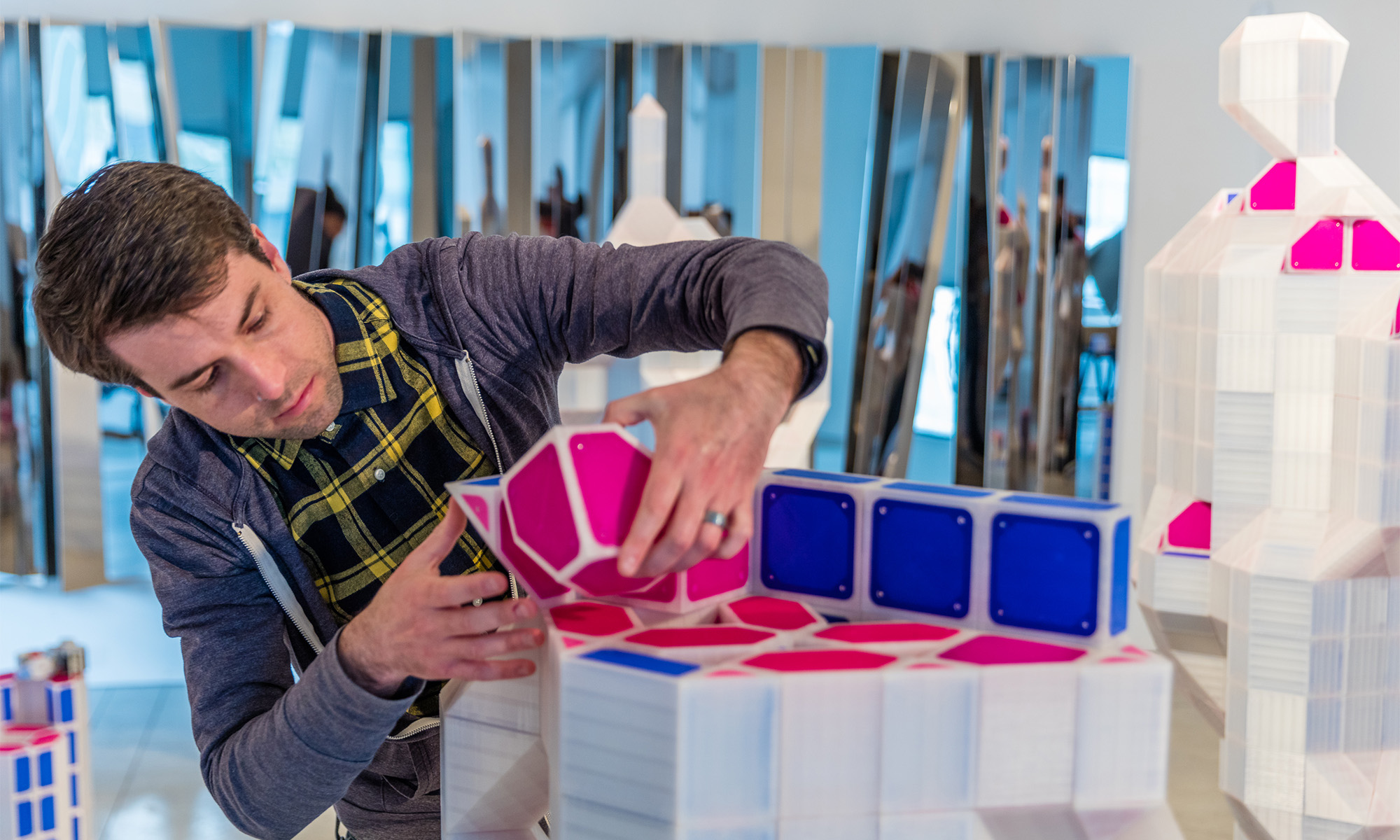Orientation Sensitivity
A visual processing phenomenon in which some line orientations are more quickly or easily parsed than other line orientations.
Two factors affect orientation sensitivity: the oblique effect, and the pop-out effect. The oblique effect is a person’s ability to judge and percieve line orientations that are along the traditional vertical and horizontal orientations better than they do any sort of angled and horizontal orientation. This is caused by neurons having greater sensitivity to stimuli along the horizontal and vertical orientations.
The pop-out effect is a visual processing phenomenon in which elements tend to stand out when compared against a background of common orientation. This is caused by neurons that are able to detect visual stimuli that activate more neurons in order to discern pattern and orientation differences. The pop-out effect is most easily detected when the differing element differs by 30 degrees or more. It is also easier to detect element differences against vertical and horizontal lines than against slanted or oblique orientations.
Example 1: Analog Clocks
Our book uses two analog clocks with 30 and 15 degrees of separation to show that 30 degrees of separation is easier for the user to parse information.
Example 2: Compass
The compass makes use of our natural tendencies to process along the x and y axes in order to quickly parse information; in this case, navigation. What does make this hard to read is that there is less than a 30 degree of separation amongst the many degrees, so it isn’t a cursorarily distinguished as say, a 12-hour clock like above.
Example 3: Car meter
The car meter makes use of the pop-out effect so that drivers can easily distinguish what speeds. In my picture, even though the speedometer is fairly hazy, notice how the speeds pop out – it makes use of the pop out effect with stark black/white contrast so the user can quickly get the information they need.
Resources
- Lidwell, William, et al. Universal Principles of Design 125 Ways to Enhance Usability, Influence Perception, Increase Appeal, Make Better Design Decisions, and Teach through Design. Rockport, 2010.
- “Get Compass Rose Png Pictures #29390 – Free Icons and PNG Backgrounds.” Freeiconspng.com, www.freeiconspng.com/img/29390.




Cindy,
Great thinking on the speedometer as an example of the pop out effect. It would be interesting to observe whether people tend to stick to driving speeds where an actual number is rendered because these have the affordance of both a number and tickmark to delineate them from just a tickmark. When I read your first paragraph my mind immediately went to holographic baseball cards I collected as a kid. By the end, however, it was clear I went far too literal and you brought me back to reality!